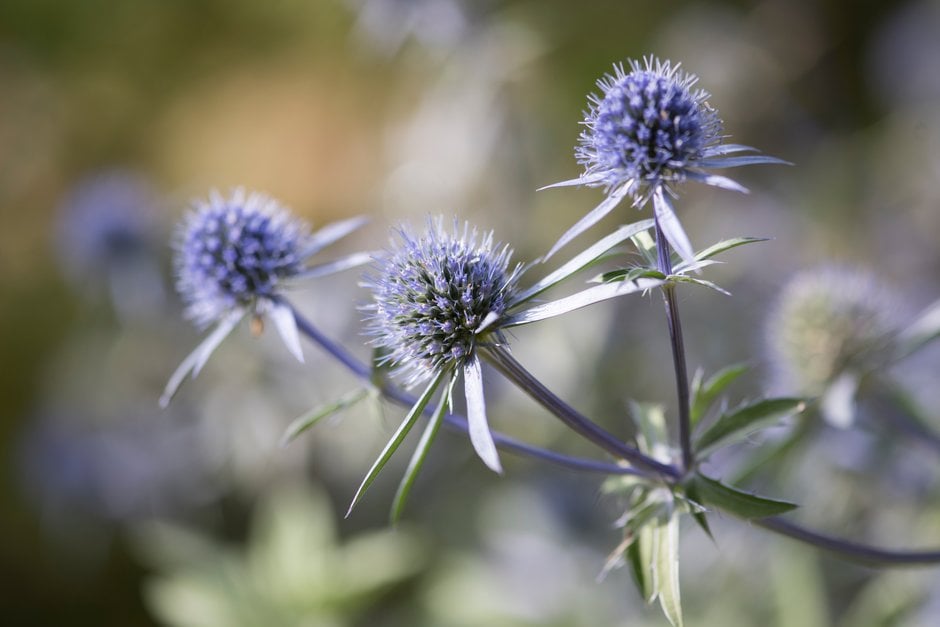Eryngium planum 'Blaukappe'
blue eryngo 'Blaukappe'
A clump-forming perenniual with rounded basal leaves; erect, branched stems bear deeply-lobed, blue-tinged, spiny leaves and small, steel-blue, terminal flower-heads with narrow, spiny bracts in summer and early autumn
Size
Ultimate height
0.5–1 metresTime to ultimate height
1–2 yearsUltimate spread
0.1–0.5 metresGrowing conditions
Moisture
Well–drainedpH
Acid, Alkaline, NeutralColour & scent
| Stem | Flower | Foliage | Fruit | |
| Spring | Blue Green | |||
|---|---|---|---|---|
| Summer | Blue | Blue Green | ||
| Autumn | Blue | Blue Green | ||
| Winter |
Position
- Full sun
Aspect
West–facing or South–facing
Exposure
ShelteredDrought resistance
Yes Hardiness
H5Botanical details
- Family
- Apiaceae
- Native to GB / Ireland
- No
- Foliage
- Deciduous
- Habit
- Clump forming
- Genus
Eryngium can be annuals, biennials or perennials with simple or divided leaves, often spiny edged, and cone-like flower-heads often surrounded by an involucre of conspicuous spiny bracts
- Name status
Accepted
How to grow
Cultivation
Grow in dry, well-drained, poor to moderately fertile soil in full sun, with protection from winter wet
Propagation
Propagate by root cuttings in late winter, or by division during spring although they may be slow to re-establish
Suggested planting locations and garden types
- City and courtyard gardens
- Coastal
- Cottage and informal garden
- Gravel garden
- Wildlife gardens
- Cut flowers
- Flower borders and beds
Pruning
Tidy plants after flowering; ideal for flower arranging - cut the stems before the flowers are fully open
Pests
May be susceptible to leaf and bud eelworms, and slugs and snails
Diseases
May be susceptible to root rot and powdery mildews
Get involved
The Royal Horticultural Society is the UK’s leading gardening charity. We aim to enrich everyone’s life through plants, and make the UK a greener and more beautiful place.
